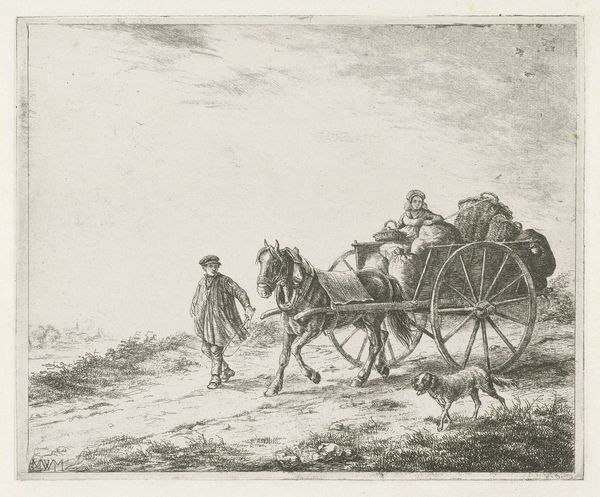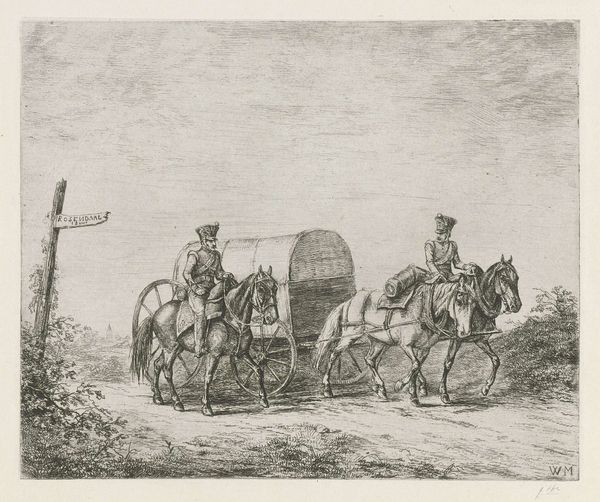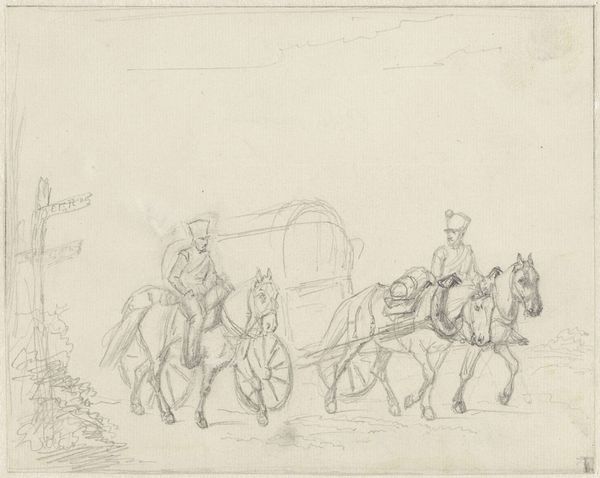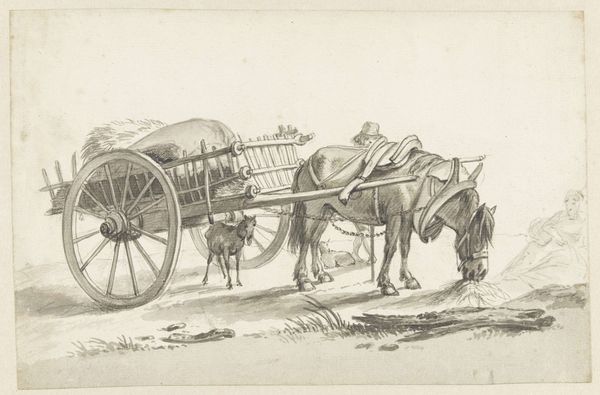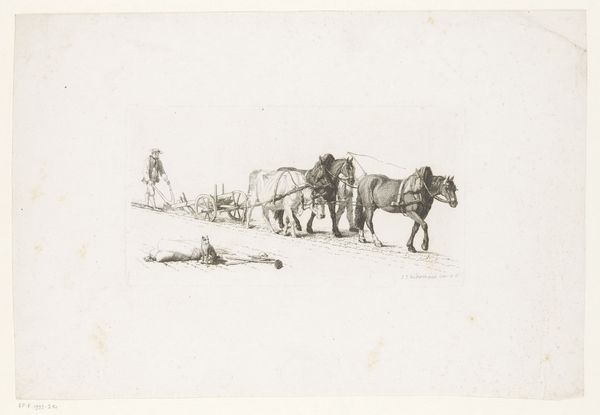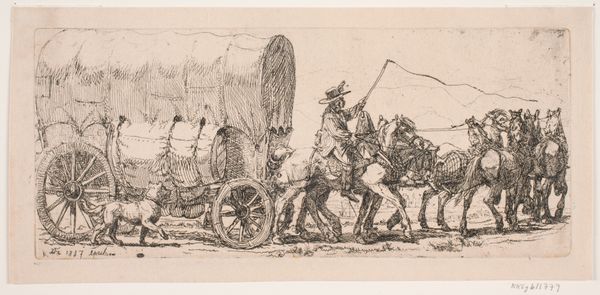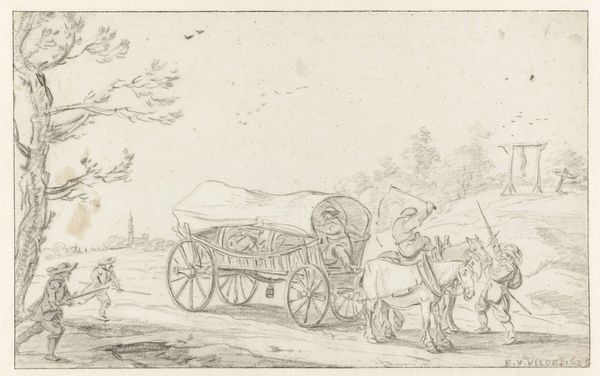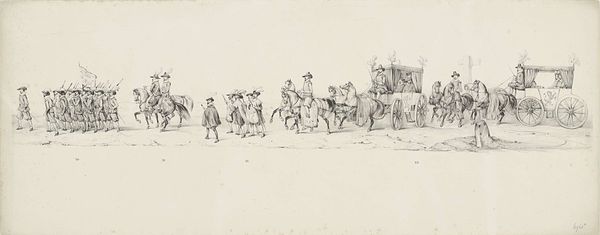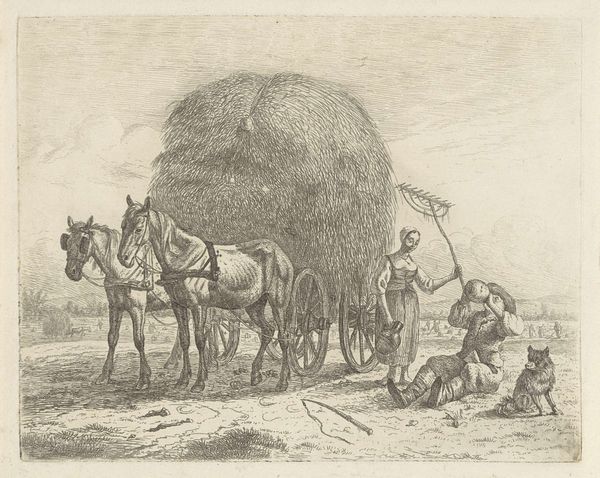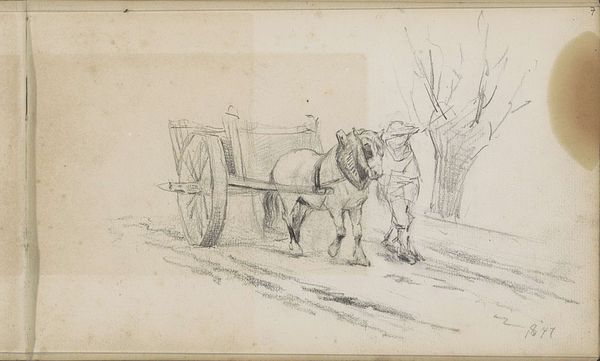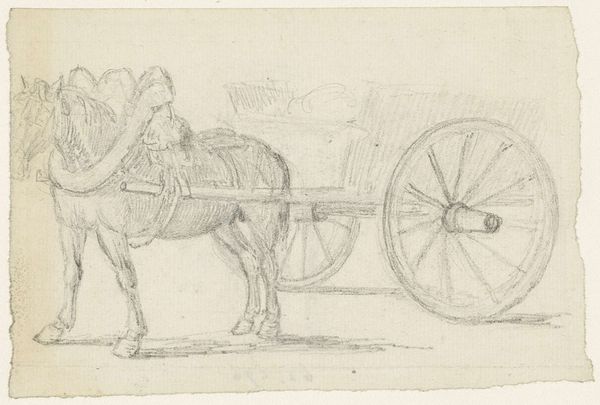
drawing, pencil
#
drawing
#
pencil sketch
#
landscape
#
romanticism
#
pencil
#
genre-painting
#
realism
Dimensions: height 168 mm, width 194 mm
Copyright: Rijks Museum: Open Domain
Curator: This drawing, entitled "De tweewielige kar," which translates to "The Two-Wheeled Cart," is attributed to Christiaan Wilhelmus Moorrees, dating from sometime between 1811 and 1867. It's rendered in pencil. Editor: The first thing that strikes me is how… humble the whole scene feels. The soft pencil strokes give it this very unassuming, almost fragile quality. You can almost feel the slow, deliberate work in the textures. Curator: It does speak to the traditions of genre painting that were becoming popular, showing everyday life rather than grand historical narratives. Editor: Exactly. And it makes you think about what their labor must have looked like. See how detailed the cart's wheels are, or the harness. That shows this artisan or farm family had tools made with purpose. What kind of community shaped their lives and how did it survive hardship. Curator: It gives us insights into the social hierarchy too, with the working-class figures in the composition contrasted with those of the land-owning classes in the Netherlands at this time, revealing Moorrees' own social observations. And note how there is the sense that the artist has attempted to democratize art through accessible images of peasants in the Romantic style. Editor: I hadn’t considered that political angle but what about how something made from something else—pencil to drawing—makes even more of the labor or the subjects’ class on display here? What does it tell us about their ability to have such personal items? Curator: That's an interesting point! And it links to how drawings could circulate and offer a glimpse of the lives of working people that are easily transported. Its lightness makes you imagine them on display within academic circles of Amsterdam too. Editor: It feels so raw and close because there is very little separating viewer and image: We could find their counterparts working now. And this kind of art humanizes those in the fields doing thankless, unnoticed activities that can have some social capital for an artist like Moorrees Curator: Indeed! So, this simple pencil sketch reveals not only a scene of everyday life but also much of the intricate fabric of the society and artworld within which Moorrees lived and worked. Editor: I see in the careful depiction of the means of conveyance--the two-wheeled cart--not just transportation but also resilience in a system dependent on its tools.
Comments
No comments
Be the first to comment and join the conversation on the ultimate creative platform.
